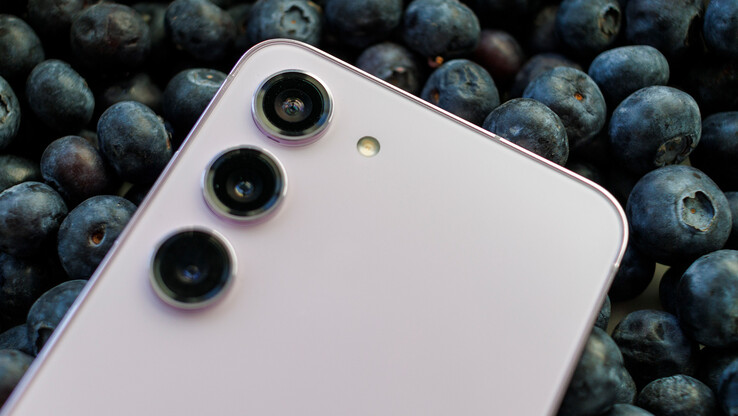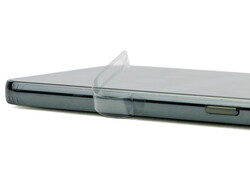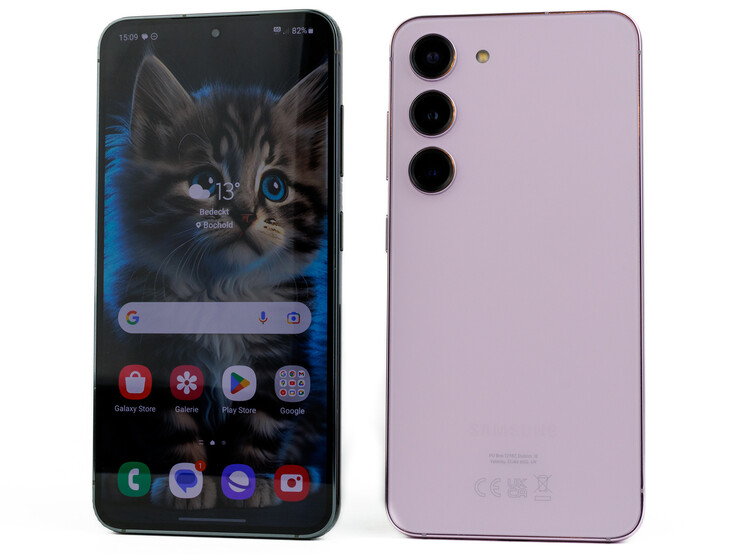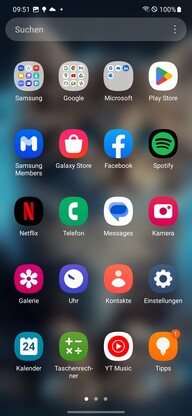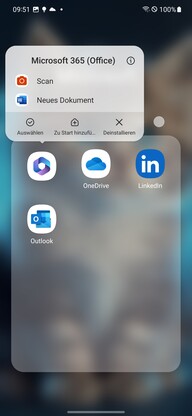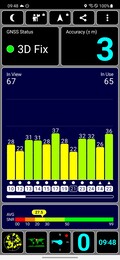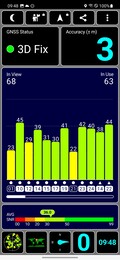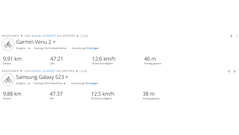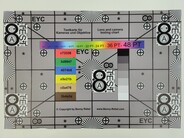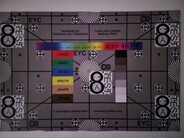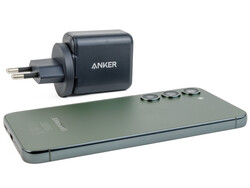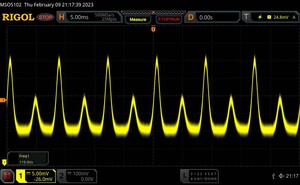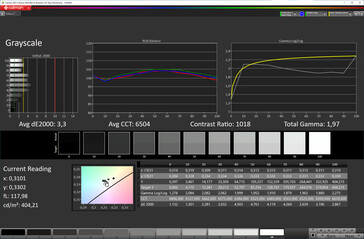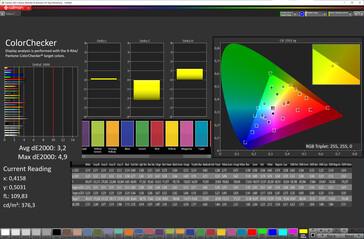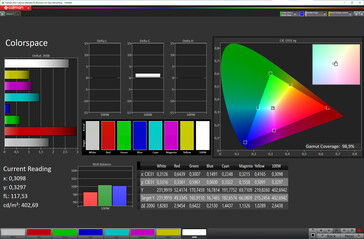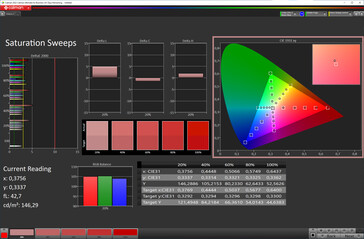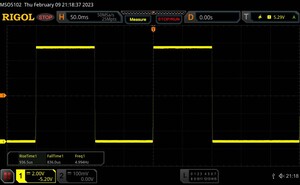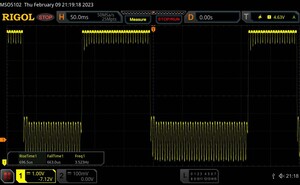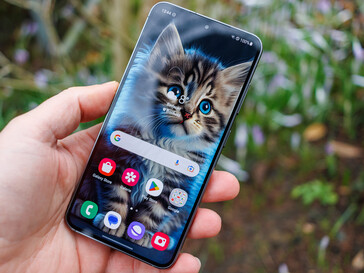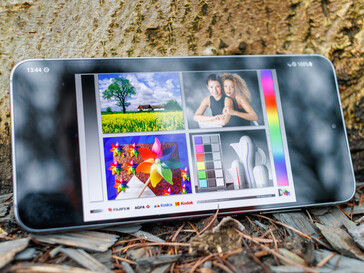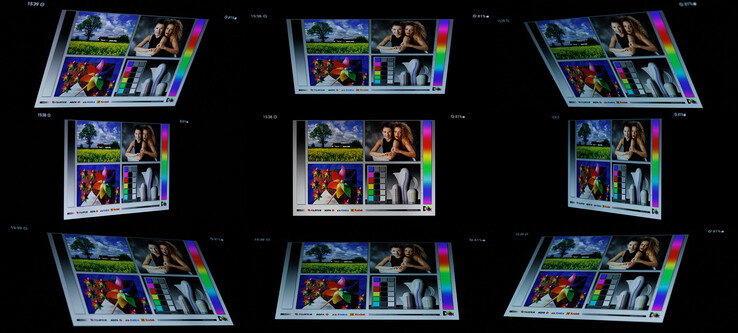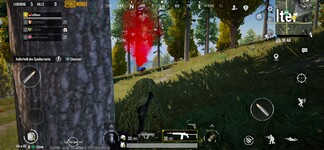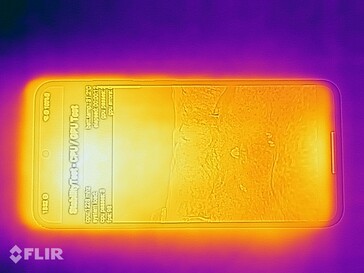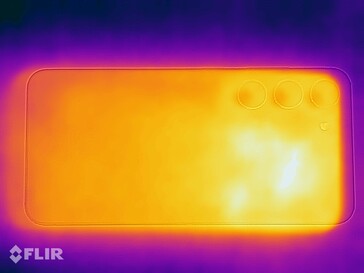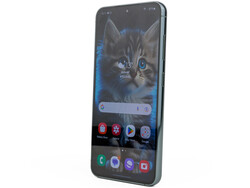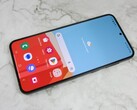Samsung Galaxy S23 review: The small S23 smartphone makes the biggest leap
The smallest smartphone in the Galaxy S series not only has the smallest physical dimensions, but has also always been a little weaker than the Plus model in recent years. This year, the only difference between the two variants is the UWB chip, which the S23 lacks.
Otherwise the Galaxy smartphone has hardly changed in appearance from its predecessor, the S22, and has grown only slightly, but has been given a larger battery. Read on to find out here whether the combination of an improved display, the new Snapdragon 8 Gen 2 for Galaxy and a larger battery proves successful.
Possible Competitors in Comparison
Rating | Date | Model | Weight | Drive | Size | Resolution | Price |
|---|---|---|---|---|---|---|---|
| 90.5 % v7 (old) | 03 / 2023 | Samsung Galaxy S23 SD 8 Gen 2 for Galaxy, Adreno 740 | 167 g | 128 GB UFS 3.1 Flash | 6.10" | 2340x1080 | |
| 89.1 % v7 (old) | 02 / 2023 | Xiaomi 13 SD 8 Gen 2, Adreno 740 | 189 g | 256 GB UFS 4.0 Flash | 6.36" | 2400x1080 | |
| 90.3 % v7 (old) | 01 / 2023 | Apple iPhone 14 Pro A16, A16 GPU 5-Core | 206 g | 256 GB NVMe | 6.10" | 2556x1179 | |
| 89.1 % v7 (old) | 02 / 2023 | Vivo X90 Pro Dimensity 9200, Immortalis-G715 MP11 | 214.9 g | 256 GB UFS 4.0 Flash | 6.78" | 2800x1260 | |
| 88.5 % v7 (old) | 11 / 2022 | Google Pixel 7 Tensor G2, Mali-G710 MP7 | 197 g | 128 GB UFS 3.1 Flash | 6.30" | 2400x1080 | |
| 88.6 % v7 (old) | 09 / 2022 | Asus Zenfone 9 SD 8+ Gen 1, Adreno 730 | 169 g | 256 GB UFS 3.1 Flash | 5.90" | 2400x1080 |
Case - Compact and comfortable
The Samsung Galaxy S23 is available in a total of six color variants, of which Cream, Phantom Black, Green and Lavender are widely available in stores, and Graphite and Lime are sold exclusively via the Samsung shop.
The smartphone is again unmistakably recognizable as a Galaxy smartphone. However, Samsung has brought the camera design in line with that of the Ultra model. This protrudes 2.3 millimeters from the case, so that the smartphone wobbles slightly when on a flat surface.
The build quality is excellent. Gaps are snug and very even. The S23 easily withstands torsional stress, but creaks slightly. The frame is made of polished Armor aluminum and the glass on the front and back is Corning Gorilla Glass Victus 2. It feels great in the hand and has a high quality feel, but is quite susceptible to fingerprints despite the matte back.
The Galaxy S23 is again both dust and waterproof according to IP68 certification
Equipment - Galaxy S23 without UWB
This year, the Samsung Galaxy S23 again makes use of USB 3.2 (Gen. 1), which supports wired image output and OTG. The latter allows peripheral devices and external storage media to be connected to the smartphone. The interface enables high data transfer rates, achieving a transfer rate of 252 MB/s in our copy test.
A choice of 128 or 256 GB is available for the storage. We recommend the larger model: since there is no microSD slot, this offers greater capacity on the one hand and on the other hand, the smaller storage variant, which we have as our test device, still has the slower UFS 3.1 storage. Samsung informed us that UFS 4.0 (so far) is not manufactured in such small units.
The S23 also has to do without an ultra-wideband chip (UWB), so it is not possible to use digital keys with the Samsung smartphone. Furthermore, neither an IR blaster, a radio receiver nor an audio jack are integrated.
Software - Samsung DeX and long update cycles
The Samsung Galaxy S23 comes with Google Android 13, which was up to date at the time of review, and the in-house One UI 5.1. Like all smartphones in the Galaxy S series, the S23 also receives four system upgrades and an additional year of security patches. The latter are released monthly, but whether this will continue to be the case until the last year is not entirely clear. Then again, the Galaxy S20 still receives security patches monthly, so this is unlikely to change in the next few years.
In addition to the Google apps, Samsung's own apps are also available on the S23, as well as the Galaxy App Store. Facebook, Netflix, Spotify and various Microsoft apps are also preinstalled on the Samsung smartphone. Apart from OneDrive, all third-party apps can be completely uninstalled, while the said app can only be deactivated.
The desktop mode DeX is also supported and can be used both wirelessly and via an optional cable. The latter variant works much more smoothly.
Communication and GNSS - Fast WLAN and precise positioning
The Samsung Galaxy S23 offers a wide range of frequencies for all mobile communication standards, and there are no compromises in this area compared to the more expensive models. Reception values in metropolitan areas were subjectively very good and gave no cause for criticism.
Although the Galaxy smartphone does not support Wi-Fi 7, it achieved very high and stable transmission rates in both the 5.0 and 6.0 GHz networks in our test with our Asus ROG Rapture GT-AXE11000 reference router.
| Networking | |
| Samsung Galaxy S23 | |
| iperf3 receive AXE11000 | |
| iperf3 transmit AXE11000 | |
| iperf3 transmit AXE11000 6GHz | |
| iperf3 receive AXE11000 6GHz | |
| Xiaomi 13 | |
| iperf3 receive AXE11000 | |
| iperf3 transmit AXE11000 | |
| iperf3 transmit AXE11000 6GHz | |
| iperf3 receive AXE11000 6GHz | |
| Apple iPhone 14 Pro | |
| iperf3 receive AXE11000 | |
| iperf3 transmit AXE11000 | |
| Vivo X90 Pro | |
| iperf3 receive AXE11000 | |
| iperf3 transmit AXE11000 | |
| iperf3 transmit AXE11000 6GHz | |
| iperf3 receive AXE11000 6GHz | |
| Google Pixel 7 | |
| iperf3 receive AXE11000 | |
| iperf3 transmit AXE11000 | |
| iperf3 transmit AXE11000 6GHz | |
| iperf3 receive AXE11000 6GHz | |
| Asus Zenfone 9 | |
| iperf3 receive AXE11000 | |
| iperf3 transmit AXE11000 | |
| iperf3 transmit AXE11000 6GHz | |
| iperf3 receive AXE11000 6GHz | |
| Samsung Galaxy S22 | |
| iperf3 receive AXE11000 | |
| iperf3 transmit AXE11000 | |
| Average of class Smartphone | |
| iperf3 receive AXE11000 | |
| iperf3 transmit AXE11000 | |
| iperf3 transmit AXE11000 6GHz | |
| iperf3 receive AXE11000 6GHz | |
Positioning with the Samsung Galaxy S23 takes place very quickly and precisely both outdoors and indoors.
In order to be able to more accurately assess the smartphone's positioning capabilities, we took it on a short bike ride, during which it was compared with the Garmin Venu 2. On a route of just under ten kilometers, the distance of the two devices was only 30 meters. In a detailed summary of the route, both did not fare so well and show a few inaccuracies; the Garmin watch is always a little more accurate. Nevertheless, the S23 is well equipped for everyday navigation tasks.
Telephony and Voice Quality
The telephony features of the Samsung Galaxy S23 performed well under testing. When held to the ear, voice quality is at a very good level and loud background noise from large crowds of people is completely eliminated for the receiver. The loudspeaker also allows for decent conversational experience and even if the user is two meters away from the S23, he/she can still be understood properly.
Features such as VoLTE and WiFi calling are supported, but SIP account support is not implemented in the system. The Galaxy smartphone has two nano-SIM slots, but can also use an eSIM instead of a physical SIM.
Cameras - Good triple camera in the Galaxy S23
The front camera of the Galaxy S23 has been completely redesigned and is now identical across the entire S23 series. The optics again relies on autofocus, offers lots of options for settings and filters and can record videos in Ultra HD at up to 60 frames per second. The results are impressive.
The heart of the main camera is a 50 MP sensor that uses pixel binning to generate 12.5 MP images. Images can also be taken in full resolution. In daylight, photos are good and have a high level of detail, but appear somewhat over-sharpened. The contrast also suffers somewhat when backlighting is present. Photo formats are 4:3, 16:9, full screen (19.5:9) and 1:1.
The ultra-wide angle uses the same sensor as the S23 Ultra, which is a visible improvement over last year's model. However, the depth of field could be a little more pronounced and the sharpness decreases significantly in the peripheral areas.
The third lens is a triple optical magnification lens, which, like the main sensor, can utilize optical image stabilization (OIS). The photos are good in daylight, but the resolution could be a little higher. If you want to get even closer to the subject, you can use the 30x digital zoom. The maximum magnification is not really suitable for photos, but up to 10x zoom is sufficient for social media. In low-light situations, the photos turn out very noisy and rarely look good. As in the other S23 models, the Expert RAW app and a Pro mode are also available for the S23.
At best, videos are recorded in 8k at up to 30 FPS, while Ultra HD (up to 60 FPS) and Full HD (up to 120 FPS) with HDR10+ are also available. A number of settings can be manually adjusted via the Pro mode and the 21:9 aspect ratio can also be used.
Zoom levels (from left): wide angle (1x), 3x, 10x, 30x
Image comparison
Choose a scene and navigate within the first image. One click changes the position on touchscreens. One click on the zoomed-in image opens the original in a new window. The first image shows the scaled photograph of the test device.
Main cameraMain cameraUltra wide angle5x zoomLow lightUnder controlled lighting conditions, the Samsung Galaxy S23 shows decent color reproduction. However, the DeltaE deviations are quite high and much brighter than they should be in colors with elements of green and blue.
The test chart is well photographed and many small details are retained, but the sharpness is not optimal in all areas. This phenomenon occurs more in in isolated spots, but is also not particularly pronounced.
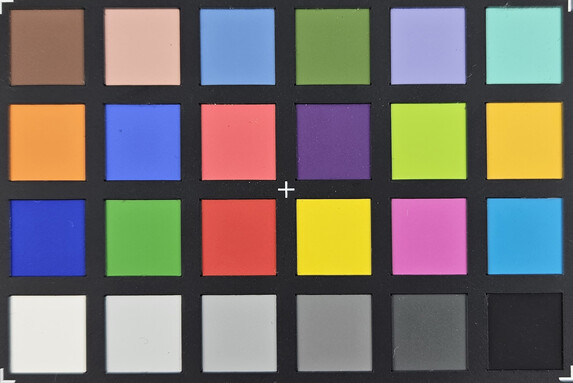
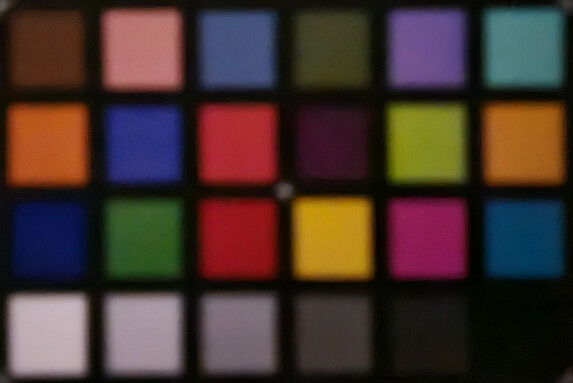
Accessories and Warranty - Only the essentials included
The Samsung Galaxy S23 comes in very flat box packaging, which suggests that little is included aside from the smartphone. After all, Samsung uses fully recycled paper here. Upon opening, only a USB-C cable, a SIM tool and a few slim information slips can be found inside. A power adapter has to be purchased optionally and has an RRP of around US$35 in the Samsung shop.
The S23 comes with a 24-month warranty in Germany, which may differ in other regions, so buyers should double-check before purchasing.
This can be expanded with the Care+ insurance package, which can be purchased for one or two years and also includes additional theft insurance. The scope of this insurance package may also differ from country to country. In the US, for example, buyers have the choice between $10/mo (for a maximum of 36 months) which can be cancelled any time, or a 2-year plan for $189 (not available in NY). A $99-$199 deductible or a $29-$99 service fee may apply when you file a claim, and up to three insurance claims can be made in a 12-month period.
Input devices & Operation - Touchscreen with 240 Hz
The surface of the Galaxy S23's capacitive touchscreen has excellent gliding properties and works at a sampling rate of 240 Hz. Inputs are recognized well and implemented quickly and precisely.
Biometric security is provided by an ultrasonic fingerprint sensor integrated into the display, which acts very quickly and reliably. Additionally or alternatively, it is also possible to use the less secure facial recognition unlock via the front camera.
The power button is used as a function key and launches the in-house language assistant Bixby ex works. This can also be switched back to function as a classic power button in the settings. In addition, the camera or any other app can be started by pressing the power button twice. In this respect, the S23 is in no way inferior to its larger siblings.
Display - More brightness for the Galaxy S23
The Samsung Galaxy S23 uses a 6.1-inch (15.49 cm) AMOLED display with a resolution of 2,340 x 1,080 (Full HD+), thus making for a sharp display. If you want to save power, you can reduce the resolution to HD+. The refresh rate of the LTPO panel is dynamically adjusted between 48 and 120 Hz; fixing this at 60 Hz is also optionally possible. HDR standards included are HLG, HDR10 and HDR10+, but not Dolby Vision.
Unlike last year's predecessor, the Galaxy S23 no longer has to settle for a reduced maximum brightness compared to the more expensive models. A high 1122 cd/m² is possible in a pure white display with an activated ambient light sensor. With an even distribution of bright and dark areas (APL18), this even increased to 1653 cd/m² under testing. If you prefer to regulate the luminosity manually, you have up to 431 cd/m² available. With the additional brightness option, this can be boosted to up to 730 cd/m². The situation is similar with the minimum display brightness, which is comparatively low at 1.24 cd/m² under normal circumstances. If you turn on the extra dimming function in the input help, you can reduce the luminosity to as little as 0.9 cd/m².
Like all OLEDs, that of the S23 also flickers. This occurs at a very constant 120 Hz at minimum brightness. The luminosity increases a little (> 3%) and becomes a constant 240 Hz with a very even cycle curve. This indicates permanent DC dimming and should be easy on the eyes. No temporal dithering was detected.
| |||||||||||||||||||||||||
Brightness Distribution: 96 %
Center on Battery: 1125 cd/m²
Contrast: ∞:1 (Black: 0 cd/m²)
ΔE ColorChecker Calman: 3.2 | ∀{0.5-29.43 Ø4.77}
ΔE Greyscale Calman: 3.3 | ∀{0.09-98 Ø5}
98.9% sRGB (Calman 2D)
Gamma: 1.97
CCT: 6504 K
| Samsung Galaxy S23 Dynamic AMOLED 2x, 2340x1080, 6.1" | Xiaomi 13 OLED, 2400x1080, 6.4" | Apple iPhone 14 Pro Super Retina XDR OLED, 2556x1179, 6.1" | Vivo X90 Pro AMOLED, 2800x1260, 6.8" | Google Pixel 7 OLED, 2400x1080, 6.3" | Asus Zenfone 9 AMOLED , 2400x1080, 5.9" | Samsung Galaxy S22 AMOLED, 2340x1080, 6.1" | |
|---|---|---|---|---|---|---|---|
| Screen | 26% | 23% | 25% | 21% | 7% | 12% | |
| Brightness middle (cd/m²) | 1125 | 1209 7% | 1046 -7% | 1018 -10% | 936 -17% | 793 -30% | 853 -24% |
| Brightness (cd/m²) | 1122 | 1208 8% | 1049 -7% | 1026 -9% | 947 -16% | 796 -29% | 858 -24% |
| Brightness Distribution (%) | 96 | 98 2% | 98 2% | 93 -3% | 95 -1% | 97 1% | 96 0% |
| Black Level * (cd/m²) | |||||||
| Colorchecker dE 2000 * | 3.2 | 1.2 62% | 1.2 62% | 0.9 72% | 1.3 59% | 1.9 41% | 1.9 41% |
| Colorchecker dE 2000 max. * | 4.9 | 3 39% | 3.1 37% | 2.2 55% | 2.7 45% | 3.4 31% | 3.2 35% |
| Greyscale dE 2000 * | 3.3 | 2.1 36% | 1.7 48% | 1.9 42% | 1.4 58% | 2.3 30% | 1.9 42% |
| Gamma | 1.97 112% | 2.26 97% | 2.19 100% | 2.26 97% | 2.25 98% | 2.26 97% | 2.07 106% |
| CCT | 6504 100% | 6504 100% | 6538 99% | 6473 100% | 6664 98% | 6860 95% | 6460 101% |
* ... smaller is better
Screen Flickering / PWM (Pulse-Width Modulation)
| Screen flickering / PWM detected | 240 Hz | ||
The display backlight flickers at 240 Hz (worst case, e.g., utilizing PWM) . The frequency of 240 Hz is relatively low, so sensitive users will likely notice flickering and experience eyestrain at the stated brightness setting and below. In comparison: 53 % of all tested devices do not use PWM to dim the display. If PWM was detected, an average of 8084 (minimum: 5 - maximum: 343500) Hz was measured. | |||
Series of measurements at a fixed zoom level and different brightness settings
The color accuracy of the Galaxy S23 is on a similar level to the S23+ and S23 Ultra. The most natural color representation of the panel is achieved when Natural mode is selected in the settings. However, it then only uses the smaller sRGB color space.
The given quality is good, but for a high-end smartphone it could be a bit more accurate.
Display Response Times
| ↔ Response Time Black to White | ||
|---|---|---|
| 1.77 ms ... rise ↗ and fall ↘ combined | ↗ 0.9365 ms rise | |
| ↘ 0.836 ms fall | ||
| The screen shows very fast response rates in our tests and should be very well suited for fast-paced gaming. In comparison, all tested devices range from 0.1 (minimum) to 240 (maximum) ms. » 9 % of all devices are better. This means that the measured response time is better than the average of all tested devices (20.2 ms). | ||
| ↔ Response Time 50% Grey to 80% Grey | ||
| 1.36 ms ... rise ↗ and fall ↘ combined | ↗ 0.6965 ms rise | |
| ↘ 0.663 ms fall | ||
| The screen shows very fast response rates in our tests and should be very well suited for fast-paced gaming. In comparison, all tested devices range from 0.165 (minimum) to 636 (maximum) ms. » 5 % of all devices are better. This means that the measured response time is better than the average of all tested devices (31.6 ms). | ||
Performance - Galaxy S23 with customized SoC
The Galaxy S23 uses the same SoC as its two sister models: the Snapdragon 8 Gen 2 for Galaxy. This variant of the Snapdragon 8 Gen 2 is one with a higher clocked prime core. Both variants can draw on 8 GB of LPDDR5x RAM.
The single-core CPU performance is correspondingly higher than that of the competition; only the iPhone is faster in this respect. The Samsung smartphone also delivers very good results in terms of system performance, which is reflected in everyday use, as the system is very responsive and always works smoothly.
| UL Procyon AI Inference for Android - Overall Score NNAPI | |
| Asus Zenfone 9 | |
| Vivo X90 Pro | |
| Google Pixel 7 | |
| Average of class Smartphone (3769 - 81594, n=133, last 2 years) | |
| Samsung Galaxy S23 | |
| Xiaomi 13 | |
| Average Qualcomm Snapdragon 8 Gen 2 for Galaxy (1267 - 16702, n=8) | |
| Geekbench ML | |
| 0.5 TensorFlow Lite CPU 0.5 | |
| Apple iPhone 14 Pro | |
| Average Qualcomm Snapdragon 8 Gen 2 for Galaxy (620 - 636, n=2) | |
| Samsung Galaxy S23 | |
| Xiaomi 13 | |
| 0.5 TensorFlow Lite GPU | |
| Apple iPhone 14 Pro | |
| Samsung Galaxy S23 | |
| Average Qualcomm Snapdragon 8 Gen 2 for Galaxy (2440 - 2443, n=2) | |
| Xiaomi 13 | |
| 0.5 TensorFlow Lite NNAPI / Core ML | |
| Apple iPhone 14 Pro | |
| Average Qualcomm Snapdragon 8 Gen 2 for Galaxy (672 - 679, n=2) | |
| Samsung Galaxy S23 | |
| Xiaomi 13 | |
The Adreno 740 is capable of very high performance. Whether it has also received a small performance boost is not entirely clear. In any case, the 4k test of GFXBench speaks in favor of this, as the S23 performs excellently in this test. In other tests, however, it delivers weaker results, which is due to the insufficient cooling. More on this later.
GFXBench (DX / GLBenchmark) 2.7: T-Rex Onscreen | 1920x1080 T-Rex Offscreen
GFXBench 3.0: on screen Manhattan Onscreen OGL | 1920x1080 1080p Manhattan Offscreen
GFXBench 3.1: on screen Manhattan ES 3.1 Onscreen | 1920x1080 Manhattan ES 3.1 Offscreen
GFXBench: on screen Car Chase Onscreen | 1920x1080 Car Chase Offscreen | on screen Aztec Ruins High Tier Onscreen | 2560x1440 Aztec Ruins High Tier Offscreen | on screen Aztec Ruins Normal Tier Onscreen | 1920x1080 Aztec Ruins Normal Tier Offscreen | 3840x2160 4K Aztec Ruins High Tier Offscreen
| 3DMark / Wild Life Extreme Unlimited | |
| Vivo X90 Pro | |
| Xiaomi 13 | |
| Samsung Galaxy S23 | |
| Apple iPhone 14 Pro | |
| Asus Zenfone 9 | |
| Samsung Galaxy S22 | |
| Google Pixel 7 | |
| 3DMark / Wild Life Extreme | |
| Samsung Galaxy S23 | |
| Vivo X90 Pro | |
| Xiaomi 13 | |
| Apple iPhone 14 Pro | |
| Asus Zenfone 9 | |
| Samsung Galaxy S22 | |
| Google Pixel 7 | |
| 3DMark / Wild Life Unlimited Score | |
| Xiaomi 13 | |
| Samsung Galaxy S23 | |
| Vivo X90 Pro | |
| Apple iPhone 14 Pro | |
| Asus Zenfone 9 | |
| Samsung Galaxy S22 | |
| Google Pixel 7 | |
| 3DMark / Sling Shot Extreme (ES 3.1) Unlimited Physics | |
| Vivo X90 Pro | |
| Samsung Galaxy S23 | |
| Xiaomi 13 | |
| Google Pixel 7 | |
| Samsung Galaxy S22 | |
| 3DMark / Sling Shot Extreme (ES 3.1) Unlimited Graphics | |
| Xiaomi 13 | |
| Vivo X90 Pro | |
| Samsung Galaxy S23 | |
| Samsung Galaxy S22 | |
| Google Pixel 7 | |
| 3DMark / Sling Shot Extreme (ES 3.1) Unlimited | |
| Vivo X90 Pro | |
| Samsung Galaxy S23 | |
| Xiaomi 13 | |
| Samsung Galaxy S22 | |
| Google Pixel 7 | |
| 3DMark / Sling Shot Extreme (ES 3.1) | |
| Samsung Galaxy S22 | |
| 3DMark / Sling Shot Extreme (ES 3.1) Graphics | |
| Samsung Galaxy S22 | |
| 3DMark / Sling Shot Extreme (ES 3.1) Physics | |
| Samsung Galaxy S22 | |
| GFXBench (DX / GLBenchmark) 2.7 / T-Rex Onscreen | |
| Asus Zenfone 9 | |
| Xiaomi 13 | |
| Samsung Galaxy S23 | |
| Vivo X90 Pro | |
| Samsung Galaxy S22 | |
| Google Pixel 7 | |
| Apple iPhone 14 Pro | |
| GFXBench (DX / GLBenchmark) 2.7 / T-Rex Offscreen | |
| Apple iPhone 14 Pro | |
| Samsung Galaxy S23 | |
| Vivo X90 Pro | |
| Xiaomi 13 | |
| Asus Zenfone 9 | |
| Samsung Galaxy S22 | |
| Google Pixel 7 | |
| GFXBench 3.0 / Manhattan Onscreen OGL | |
| Xiaomi 13 | |
| Samsung Galaxy S23 | |
| Vivo X90 Pro | |
| Samsung Galaxy S22 | |
| Asus Zenfone 9 | |
| Google Pixel 7 | |
| Apple iPhone 14 Pro | |
| GFXBench 3.0 / 1080p Manhattan Offscreen | |
| Apple iPhone 14 Pro | |
| Samsung Galaxy S23 | |
| Vivo X90 Pro | |
| Xiaomi 13 | |
| Samsung Galaxy S22 | |
| Asus Zenfone 9 | |
| Google Pixel 7 | |
| GFXBench 3.1 / Manhattan ES 3.1 Onscreen | |
| Xiaomi 13 | |
| Samsung Galaxy S23 | |
| Samsung Galaxy S22 | |
| Vivo X90 Pro | |
| Asus Zenfone 9 | |
| Google Pixel 7 | |
| Apple iPhone 14 Pro | |
| GFXBench 3.1 / Manhattan ES 3.1 Offscreen | |
| Apple iPhone 14 Pro | |
| Samsung Galaxy S23 | |
| Xiaomi 13 | |
| Samsung Galaxy S22 | |
| Asus Zenfone 9 | |
| Vivo X90 Pro | |
| Google Pixel 7 | |
| GFXBench / Car Chase Onscreen | |
| Samsung Galaxy S23 | |
| Xiaomi 13 | |
| Vivo X90 Pro | |
| Asus Zenfone 9 | |
| Google Pixel 7 | |
| Samsung Galaxy S22 | |
| Apple iPhone 14 Pro | |
| GFXBench / Car Chase Offscreen | |
| Samsung Galaxy S23 | |
| Apple iPhone 14 Pro | |
| Xiaomi 13 | |
| Vivo X90 Pro | |
| Asus Zenfone 9 | |
| Google Pixel 7 | |
| Samsung Galaxy S22 | |
| GFXBench / Aztec Ruins High Tier Onscreen | |
| Samsung Galaxy S23 | |
| Asus Zenfone 9 | |
| Vivo X90 Pro | |
| Xiaomi 13 | |
| Apple iPhone 14 Pro | |
| Samsung Galaxy S22 | |
| Google Pixel 7 | |
| GFXBench / Aztec Ruins High Tier Offscreen | |
| Samsung Galaxy S23 | |
| Xiaomi 13 | |
| Vivo X90 Pro | |
| Asus Zenfone 9 | |
| Apple iPhone 14 Pro | |
| Google Pixel 7 | |
| Samsung Galaxy S22 | |
| GFXBench / Aztec Ruins Normal Tier Onscreen | |
| Samsung Galaxy S23 | |
| Xiaomi 13 | |
| Vivo X90 Pro | |
| Asus Zenfone 9 | |
| Samsung Galaxy S22 | |
| Google Pixel 7 | |
| Apple iPhone 14 Pro | |
| GFXBench / Aztec Ruins Normal Tier Offscreen | |
| Xiaomi 13 | |
| Samsung Galaxy S23 | |
| Apple iPhone 14 Pro | |
| Asus Zenfone 9 | |
| Vivo X90 Pro | |
| Google Pixel 7 | |
| Samsung Galaxy S22 | |
| GFXBench / 4K Aztec Ruins High Tier Offscreen | |
| Samsung Galaxy S23 | |
| Xiaomi 13 | |
| Vivo X90 Pro | |
| Apple iPhone 14 Pro | |
| Asus Zenfone 9 | |
| Google Pixel 7 | |
The browser performance of the Galaxy S23 is very good in our benchmarks. Only the iPhone 14 Pro is faster.
| Jetstream 2 - 2.0 Total Score | |
| Apple iPhone 14 Pro (Safari 16) | |
| Average Qualcomm Snapdragon 8 Gen 2 for Galaxy (152.9 - 196.3, n=8) | |
| Samsung Galaxy S23 (Chrome 109) | |
| Average of class Smartphone (23.8 - 387, n=148, last 2 years) | |
| Asus Zenfone 9 (Chrome 104) | |
| Xiaomi 13 (Chrome 108) | |
| Samsung Galaxy S22 (Chrome 100.0.4896.79) | |
| Google Pixel 7 (Chrome 106) | |
| Vivo X90 Pro (Chrome 109) | |
| Speedometer 2.0 - Result 2.0 | |
| Apple iPhone 14 Pro (Safari 16) | |
| Average of class Smartphone (15.2 - 643, n=120, last 2 years) | |
| Average Qualcomm Snapdragon 8 Gen 2 for Galaxy (136 - 197, n=6) | |
| Samsung Galaxy S23 (Chrome 109) | |
| Xiaomi 13 (Chrome 108) | |
| Samsung Galaxy S22 (Chrome 100.0.4896.79) | |
| Asus Zenfone 9 | |
| Google Pixel 7 (Chrome 106) | |
| Vivo X90 Pro (Chrome 109) | |
| WebXPRT 4 - Overall | |
| Apple iPhone 14 Pro (Safari 16) | |
| Average Qualcomm Snapdragon 8 Gen 2 for Galaxy (145 - 187, n=8) | |
| Average of class Smartphone (27 - 306, n=144, last 2 years) | |
| Asus Zenfone 9 (Chrome 104) | |
| Samsung Galaxy S23 (Chrome 109) | |
| Xiaomi 13 (Chrome 108) | |
| Google Pixel 7 (Chrome 106) | |
| Vivo X90 Pro (Chrome 109) | |
| Octane V2 - Total Score | |
| Apple iPhone 14 Pro (Safari 16) | |
| Samsung Galaxy S23 (Chrome 109) | |
| Average Qualcomm Snapdragon 8 Gen 2 for Galaxy (49582 - 64715, n=8) | |
| Asus Zenfone 9 (Chrome 104) | |
| Average of class Smartphone (2228 - 126661, n=195, last 2 years) | |
| Google Pixel 7 | |
| Xiaomi 13 (Chrome 108) | |
| Samsung Galaxy S22 (Chrome 100.0.4896.79) | |
| Vivo X90 Pro (Chrome 109) | |
| Mozilla Kraken 1.1 - Total | |
| Vivo X90 Pro (Chrome 109) | |
| Samsung Galaxy S22 (Chrome 100.0.4896.79) | |
| Average of class Smartphone (257 - 28190, n=155, last 2 years) | |
| Google Pixel 7 (Chrome 106) | |
| Xiaomi 13 (Chrome 108) | |
| Average Qualcomm Snapdragon 8 Gen 2 for Galaxy (634 - 1533, n=8) | |
| Asus Zenfone 9 (Chrome 104) | |
| Samsung Galaxy S23 (Chrome 109) | |
| Apple iPhone 14 Pro (Safari 16) | |
* ... smaller is better
The 128 GB version only uses old UFS 3.1 storage, while the 256 GB model uses UFS 4.0. A comparison shows that the performance increase of the newer standard is primarily noticeable in sequential reading, otherwise the increases are not too pronounced, which is also due to the fact that the write speeds of the UFS 4.0 in the Galaxy S23 are well below its capabilities.
| Samsung Galaxy S23 | Xiaomi 13 | Vivo X90 Pro | Google Pixel 7 | Asus Zenfone 9 | Samsung Galaxy S22 | Average 128 GB UFS 3.1 Flash | Average of class Smartphone | |
|---|---|---|---|---|---|---|---|---|
| AndroBench 3-5 | 117% | 114% | -11% | 49% | -2% | -12% | 46% | |
| Sequential Read 256KB (MB/s) | 3133.7 ? 1686.71 ? | 3454.01 10% | 3866.75 23% | 1280.81 -59% | 1986.97 -37% | 1486 -53% | 1569 ? -50% | 2245 ? -28% |
| Sequential Write 256KB (MB/s) | 844 ? 628.53 ? | 2722.77 223% | 2643.38 213% | 879.39 4% | 1776.21 110% | 993 18% | 768 ? -9% | 1877 ? 122% |
| Random Read 4KB (MB/s) | 427.61 ? 343.65 ? | 393.81 -8% | 367.89 -14% | 210.47 -51% | 298.46 -30% | 273 -36% | 244 ? -43% | 298 ? -30% |
| Random Write 4KB (MB/s) | 156.69 ? 130.26 ? | 536.76 243% | 521.43 233% | 253.92 62% | 398.39 154% | 257.6 64% | 243 ? 55% | 344 ? 120% |
Gaming- Fun with minimal restrictions
The Adreno 740 ensures powerful gaming performance on the Galaxy 23, which we tested with GameBench.
Casual titles such as Subway Surfer pose no issue for the smartphone, even at 120 Hz. The shooter PUBG Mobile also works at very stable frame rates. Only Diablo: Immortal has a few hiccups, which is very likely an optimization issue and should be fixed soon. It is a pity, however, that the highest graphics detail level cannot be selected for the game as of yet.
Emissions - Weak cooling in the Samsung smartphone
Temperature
Surface temperatures of the Samsung Galaxy S23 remain pleasantly low at all times. Even under sustained load, the smartphone doesn't get so much as lukewarm.
However, this comes at a price, because in the stress test of the 3DMark Wild Life (Extreme) the S23 does not prove to be particularly stable and loses more than 30 percent of its initial performance over longer periods of time.
(+) The maximum temperature on the upper side is 30.6 °C / 87 F, compared to the average of 35.2 °C / 95 F, ranging from 21.9 to 247 °C for the class Smartphone.
(+) The bottom heats up to a maximum of 30.2 °C / 86 F, compared to the average of 34 °C / 93 F
(+) In idle usage, the average temperature for the upper side is 24.1 °C / 75 F, compared to the device average of 32.9 °C / 91 F.
3DMark Wild Life Stress Test
| 3DMark | |
| Wild Life Stress Test Stability | |
| Apple iPhone 14 Pro | |
| Xiaomi 13 | |
| Vivo X90 Pro | |
| Samsung Galaxy S23 | |
| Google Pixel 7 | |
| Samsung Galaxy S22 | |
| Asus Zenfone 9 | |
| Wild Life Extreme Stress Test | |
| Vivo X90 Pro | |
| Xiaomi 13 | |
| Google Pixel 7 | |
| Apple iPhone 14 Pro | |
| Samsung Galaxy S22 | |
| Samsung Galaxy S23 | |
| Asus Zenfone 9 | |
Speakers
The two speakers of the Samsung Galaxy S23 have been optimized by AKG and support Dolby Atmos. The sound quality is comparatively good, but the S23 Ultra is a little bit better in the pink noise measurement chart.
Wired headphones can be connected to the USB-C port, which may require an adapter. Bluetooth 5.3 is available wirelessly, but unfortunately the audio codec support (SBC, AAC, aptX, LDAC and Samsung Seamless (SSC)) has room for improvement.
Samsung Galaxy S23 audio analysis
(+) | speakers can play relatively loud (91.5 dB)
Bass 100 - 315 Hz
(-) | nearly no bass - on average 22.5% lower than median
(+) | bass is linear (6.1% delta to prev. frequency)
Mids 400 - 2000 Hz
(±) | reduced mids - on average 5.8% lower than median
(+) | mids are linear (3.9% delta to prev. frequency)
Highs 2 - 16 kHz
(+) | balanced highs - only 4.5% away from median
(+) | highs are linear (1.8% delta to prev. frequency)
Overall 100 - 16.000 Hz
(±) | linearity of overall sound is average (16.2% difference to median)
Compared to same class
» 6% of all tested devices in this class were better, 5% similar, 90% worse
» The best had a delta of 11%, average was 35%, worst was 134%
Compared to all devices tested
» 25% of all tested devices were better, 5% similar, 69% worse
» The best had a delta of 4%, average was 24%, worst was 134%
Apple iPhone 14 Pro audio analysis
(+) | speakers can play relatively loud (89.5 dB)
Bass 100 - 315 Hz
(-) | nearly no bass - on average 20.3% lower than median
(±) | linearity of bass is average (8.3% delta to prev. frequency)
Mids 400 - 2000 Hz
(+) | balanced mids - only 4.9% away from median
(+) | mids are linear (4.9% delta to prev. frequency)
Highs 2 - 16 kHz
(±) | higher highs - on average 8.2% higher than median
(+) | highs are linear (2.6% delta to prev. frequency)
Overall 100 - 16.000 Hz
(±) | linearity of overall sound is average (17.5% difference to median)
Compared to same class
» 12% of all tested devices in this class were better, 9% similar, 79% worse
» The best had a delta of 11%, average was 35%, worst was 134%
Compared to all devices tested
» 33% of all tested devices were better, 8% similar, 59% worse
» The best had a delta of 4%, average was 24%, worst was 134%
Battery Life - Long runtimes with 3,900 mAh
Power Consumption
The power consumption of the Galaxy S23 is very low. Only in GFXBench with adjusted display brightness (150 cd/m²) is it significantly higher than that of the Xiaomi 13.
A compromise that has to be made compared to the two bigger siblings is the reduced charging power of the S23, which is limited to 25 watts by cable and requires a relatively long period of 80 minutes for a full charge. It takes even longer wirelessly, because then only 15 watts is possible. Wireless PowerShare is also on board.
| Off / Standby | |
| Idle | |
| Load |
|
Key:
min: | |
| Samsung Galaxy S23 3900 mAh | Xiaomi 13 4500 mAh | Apple iPhone 14 Pro 3200 mAh | Vivo X90 Pro 4870 mAh | Google Pixel 7 4355 mAh | Asus Zenfone 9 4300 mAh | Samsung Galaxy S22 3700 mAh | Average Qualcomm Snapdragon 8 Gen 2 for Galaxy | Average of class Smartphone | |
|---|---|---|---|---|---|---|---|---|---|
| Power Consumption | -19% | -25% | -90% | -22% | -34% | -48% | -124% | -77% | |
| Idle Minimum * (Watt) | 0.57 | 0.76 -33% | 0.56 2% | 0.9 -58% | 0.89 -56% | 1.01 -77% | 0.69 -21% | 1.531 ? -169% | 0.847 ? -49% |
| Idle Average * (Watt) | 0.74 | 1.1 -49% | 1.37 -85% | 2.32 -214% | 1.07 -45% | 1.1 -49% | 1.19 -61% | 1.848 ? -150% | 1.445 ? -95% |
| Idle Maximum * (Watt) | 0.83 | 1.13 -36% | 1.42 -71% | 2.39 -188% | 1.2 -45% | 1.17 -41% | 1.26 -52% | 1.998 ? -141% | 1.629 ? -96% |
| Load Average * (Watt) | 4.26 | 2.99 30% | 3.42 20% | 3.64 15% | 3.27 23% | 3.3 23% | 6.97 -64% | 7.9 ? -85% | 6.97 ? -64% |
| Load Maximum * (Watt) | 6.16 | 6.63 -8% | 5.56 10% | 6.53 -6% | 5.5 11% | 7.89 -28% | 8.85 -44% | 10.7 ? -74% | 11.2 ? -82% |
* ... smaller is better
Power Consumption: Geekbench (150 cd/m²)
Power Consumption: GFXBench (150 cd/m²)
Battery Life
The battery life of the Samsung Galaxy S23 is very good despite its comparatively small battery capacity of 3,900 mAh.
The Samsung smartphone also accompanied us to the Mobile World Congress and positively surprised us with its stamina, because despite intensive use during the trade fair, the battery was still more than 50 percent full late in the evening. If you only use the smartphone sporadically, you'll definitely have enough power for several days, especially since the S23 is very frugal in standby.
| Samsung Galaxy S23 3900 mAh | Xiaomi 13 4500 mAh | Apple iPhone 14 Pro 3200 mAh | Vivo X90 Pro 4870 mAh | Google Pixel 7 4355 mAh | Asus Zenfone 9 4300 mAh | Samsung Galaxy S22 3700 mAh | |
|---|---|---|---|---|---|---|---|
| Battery runtime | 14% | 3% | -1% | -24% | 0% | -18% | |
| Reader / Idle (h) | 37.5 | 49.7 33% | 44.3 18% | 17.7 -53% | 28.1 -25% | 36.4 -3% | |
| H.264 (h) | 20.9 | 20.4 -2% | 23.3 11% | 20.5 -2% | 23.4 12% | 14.8 -29% | |
| WiFi v1.3 (h) | 15.4 | 17 10% | 13.5 -12% | 15.2 -1% | 12.2 -21% | 13.8 -10% | 11.3 -27% |
| Load (h) | 6.2 | 7.1 15% | 5.9 -5% | 5 -19% | 7.7 24% | 5.4 -13% |
Pros
Cons
Verdict - Galaxy S23 turns out to be a strong upgrade
The Samsung Galaxy S23 makes the biggest leap forward this year, catching up with the Galaxy S23+. This is particularly noticeable in the display brightness, which is now on the same level. The WLAN standard has also been adjusted, but unfortunately Wi-Fi 7 is omitted.
In addition to the larger display, the S23+ also offers a disproportionately larger battery, which enables even longer runtimes and, at 45 watts, can also be recharged more quickly. In addition, the S23 still has to do without UWB.
The Samsung Galaxy S23 is certainly one of the best compact smartphones of 2023.
Under testing, the Galaxy S23 scores with great voice quality, a long update supply, strong performance and good cameras on both sides. Battery runtimes are also very good and the LTPO-AMOLED display can get very bright, but color reproduction is not entirely perfect.
Compact alternatives are the Asus Zenfone 9 or the Xiaomi 13. The iPhone 13 mini in particular is even smaller, but also comes with technical compromises.
Price and Availability
In the US, the Galaxy S23 starts at S799.99 for the 128 GB model. 256 GB costs $999.99.
Users are advised to look at popular resellers such as Amazon (where applicable) where the smartphone can occasionally be bought at slightly cheaper prices.
Samsung Galaxy S23
- 03/09/2023 v7 (old)
Daniel Schmidt
Transparency
The selection of devices to be reviewed is made by our editorial team. The test sample was provided to the author as a loan by the manufacturer or retailer for the purpose of this review. The lender had no influence on this review, nor did the manufacturer receive a copy of this review before publication. There was no obligation to publish this review. As an independent media company, Notebookcheck is not subjected to the authority of manufacturers, retailers or publishers.
This is how Notebookcheck is testing
Every year, Notebookcheck independently reviews hundreds of laptops and smartphones using standardized procedures to ensure that all results are comparable. We have continuously developed our test methods for around 20 years and set industry standards in the process. In our test labs, high-quality measuring equipment is utilized by experienced technicians and editors. These tests involve a multi-stage validation process. Our complex rating system is based on hundreds of well-founded measurements and benchmarks, which maintains objectivity. Further information on our test methods can be found here.




